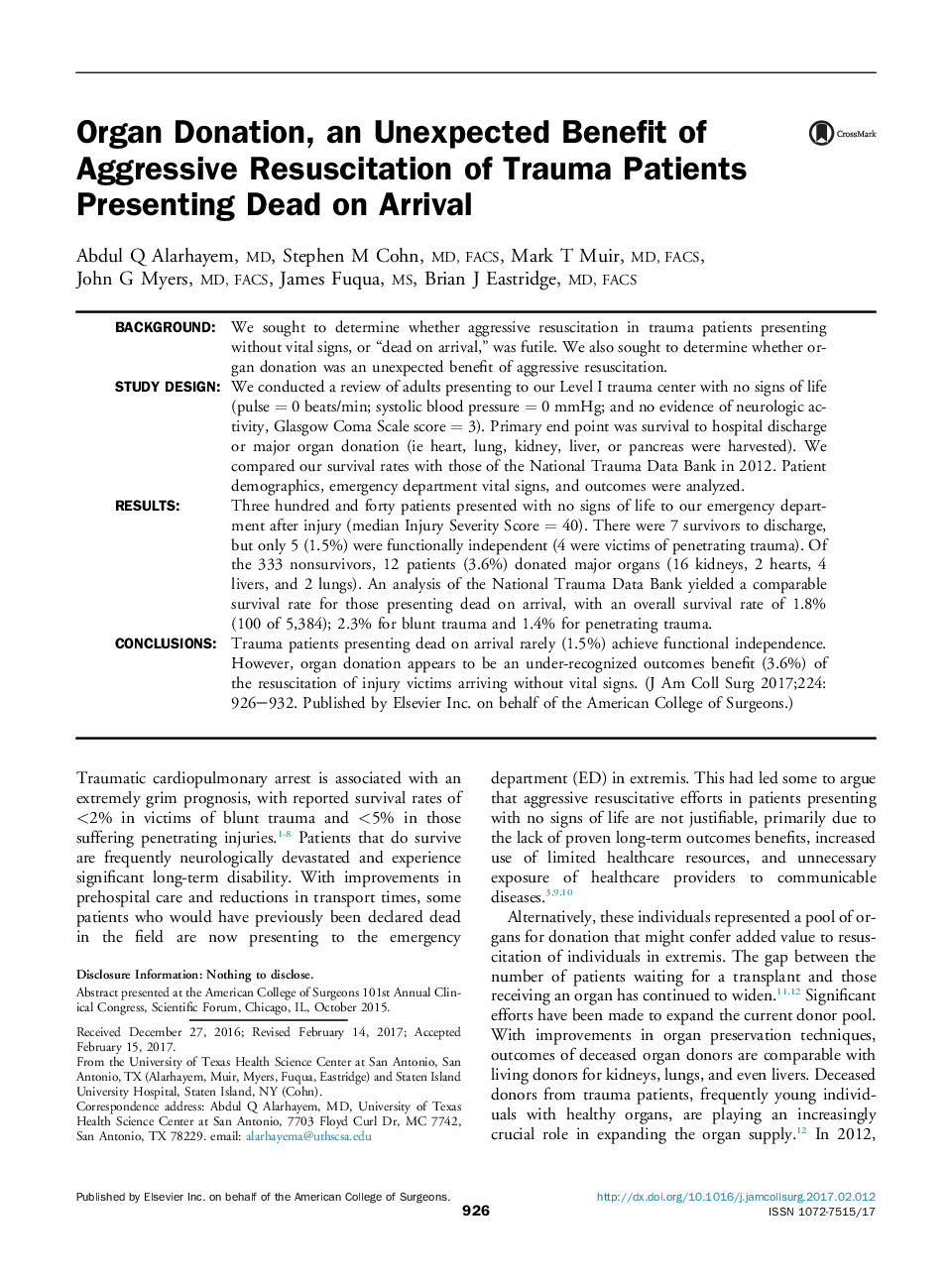| Article ID | Journal | Published Year | Pages | File Type |
|---|---|---|---|---|
| 5733015 | Journal of the American College of Surgeons | 2017 | 7 Pages |
BackgroundWe sought to determine whether aggressive resuscitation in trauma patients presenting without vital signs, or “dead on arrival,” was futile. We also sought to determine whether organ donation was an unexpected benefit of aggressive resuscitation.Study DesignWe conducted a review of adults presenting to our Level I trauma center with no signs of life (pulse = 0 beats/min; systolic blood pressure = 0 mmHg; and no evidence of neurologic activity, Glasgow Coma Scale score = 3). Primary end point was survival to hospital discharge or major organ donation (ie heart, lung, kidney, liver, or pancreas were harvested). We compared our survival rates with those of the National Trauma Data Bank in 2012. Patient demographics, emergency department vital signs, and outcomes were analyzed.ResultsThree hundred and forty patients presented with no signs of life to our emergency department after injury (median Injury Severity Score = 40). There were 7 survivors to discharge, but only 5 (1.5%) were functionally independent (4 were victims of penetrating trauma). Of the 333 nonsurvivors, 12 patients (3.6%) donated major organs (16 kidneys, 2 hearts, 4 livers, and 2 lungs). An analysis of the National Trauma Data Bank yielded a comparable survival rate for those presenting dead on arrival, with an overall survival rate of 1.8% (100 of 5,384); 2.3% for blunt trauma and 1.4% for penetrating trauma.ConclusionsTrauma patients presenting dead on arrival rarely (1.5%) achieve functional independence. However, organ donation appears to be an under-recognized outcomes benefit (3.6%) of the resuscitation of injury victims arriving without vital signs.
